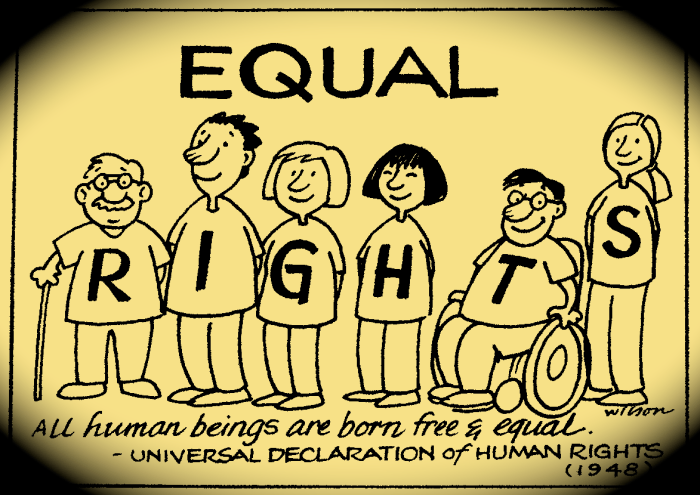Health equity customer service goes beyond just providing good service; it’s about ensuring everyone has fair and equal access to healthcare information and support. Disparities in access to healthcare and health information can significantly impact customer experiences, leading to frustration, confusion, and even worse, poorer health outcomes.
This guide explores the crucial role of health equity in customer service, outlining strategies for creating a more equitable and inclusive experience for all.
By understanding the complexities of health equity and its impact on customer service, companies can develop strategies to address disparities, promote inclusivity, and ultimately, build stronger relationships with their customers. This involves implementing policies and practices that ensure equitable access to information, resources, and support, regardless of a customer’s background, socioeconomic status, or health status.
Defining Health Equity in Customer Service

Health equity in customer service is about ensuring that all customers, regardless of their background, have equal access to quality care and information. It acknowledges and addresses the systemic barriers that can prevent individuals from receiving the care they need.
Health Disparities and Customer Experiences
Disparities in access to healthcare and health information can significantly impact customer experiences. For example, individuals from marginalized communities may face challenges related to:
- Limited access to healthcare providers, especially specialists.
- Lack of culturally competent care, leading to misunderstandings and mistrust.
- Financial constraints that hinder access to essential services and medications.
- Language barriers that make it difficult to understand medical information.
These disparities can result in delayed diagnoses, poorer health outcomes, and a sense of frustration and disempowerment for customers.
Integrating Health Equity into Customer Service
Integrating health equity considerations into customer service practices can create a more inclusive and equitable experience for all. This involves:
- Building a diverse and culturally competent workforce: Employing staff who reflect the diversity of the customer base ensures that customers feel understood and respected.
- Providing language interpretation services: Offering translation services in multiple languages enables customers to communicate effectively with healthcare providers.
- Developing culturally sensitive communication strategies: Tailoring communication to different cultural backgrounds helps build trust and rapport with customers.
- Addressing socioeconomic barriers: Implementing financial assistance programs and flexible payment options can improve access to care for low-income customers.
- Utilizing technology to enhance accessibility: Leveraging telehealth platforms and mobile apps can expand access to healthcare services for individuals in remote or underserved areas.
The Impact of Health Equity on Customer Service

Health equity, a concept that prioritizes fair and just access to healthcare and opportunities for all, has a significant impact on customer service. It’s not just about providing equal service; it’s about understanding and addressing the unique needs and challenges of diverse customer populations.
The Relationship Between Health Equity and Customer Satisfaction
Health equity and customer satisfaction are deeply intertwined. When companies prioritize health equity in their customer service strategies, they create a more inclusive and equitable experience for all customers. This, in turn, leads to higher customer satisfaction, loyalty, and positive word-of-mouth.
- Improved Customer Experience:When companies address health disparities, they can tailor their services to better meet the needs of diverse customer populations. This can involve providing culturally competent care, using accessible language and communication styles, and offering services in multiple languages.
For example, a healthcare provider might offer translation services or have bilingual staff to ensure effective communication with patients who speak different languages. This leads to a more positive and satisfying customer experience.
- Increased Trust and Loyalty:When customers feel understood and respected, they are more likely to trust and be loyal to a company. By demonstrating a commitment to health equity, companies can build stronger relationships with their customers, fostering trust and loyalty. For example, a financial institution might offer financial literacy programs tailored to specific communities, helping customers understand financial concepts and make informed decisions.
This can lead to increased trust and loyalty among those customers.
- Enhanced Reputation and Brand Image:Companies that prioritize health equity are seen as more ethical and socially responsible. This positive perception can enhance their reputation and brand image, attracting customers who value these principles. For example, a technology company might develop accessible products and services that cater to people with disabilities.
This demonstrates a commitment to inclusion and can attract customers who value accessibility and inclusivity.
Benefits of Prioritizing Health Equity in Customer Service, Health equity customer service
Prioritizing health equity in customer service brings numerous benefits to companies, beyond simply improving customer satisfaction.
- Reduced Costs:Addressing health disparities can actually lead to cost savings for companies. By providing equitable services, companies can prevent unnecessary healthcare utilization and reduce the overall cost of care. For example, a health insurance company might offer preventive health programs tailored to specific communities, helping to reduce the incidence of chronic diseases and lower healthcare costs in the long run.
- Increased Revenue:Companies that prioritize health equity often see an increase in revenue. By attracting and retaining a diverse customer base, companies can expand their market reach and increase their profitability. For example, a retail company might offer culturally relevant products and services that cater to diverse customer needs, attracting new customers and boosting sales.
- Improved Employee Engagement:When employees feel valued and empowered to make a difference, they are more likely to be engaged and productive. Companies that prioritize health equity in their customer service strategies can create a more inclusive and equitable workplace, leading to improved employee morale and engagement.
For example, a company might offer employee training on cultural sensitivity and health equity, promoting a more inclusive and equitable work environment.
Examples of Companies Implementing Health Equity Principles in Customer Service
Several companies have successfully implemented health equity principles in their customer service strategies, leading to positive outcomes.
- Kaiser Permanente:This health care provider has implemented several initiatives to address health disparities, including providing culturally competent care, offering language translation services, and creating community health programs. These efforts have resulted in improved patient satisfaction and health outcomes.
- Target:This retail giant has partnered with organizations like the National Urban League to address racial disparities in healthcare. Target has also launched initiatives to promote diversity and inclusion within its workforce, creating a more equitable and inclusive customer service experience.
- Google:This technology company has developed accessible products and services that cater to people with disabilities. Google has also invested in research and development to address health disparities and improve health outcomes for underserved communities.
Strategies for Promoting Health Equity in Customer Service: Health Equity Customer Service

Creating a customer service environment that fosters health equity is not merely a matter of good intentions; it requires a proactive and strategic approach. This involves understanding the nuances of health disparities and designing systems that address them. By implementing specific strategies and adhering to best practices, organizations can ensure equitable treatment and access to information for all customers, regardless of their background or health status.
Health equity in customer service means ensuring everyone has equal access to quality care, regardless of background. Organizations like the Schiffert Health Center are leading the way in this area by providing culturally competent services and addressing social determinants of health.
By prioritizing equity, these centers can create a more just and equitable healthcare system for all.
Framework for Creating a Health Equity-Focused Customer Service Environment
A comprehensive framework for promoting health equity in customer service should encompass various aspects, including:
- Data Collection and Analysis:Collecting and analyzing data on customer demographics, health status, and service interactions is crucial to identify disparities and areas for improvement. This data can reveal patterns of inequity and inform the development of targeted interventions.
- Diversity and Inclusion Training:Training customer service representatives on the principles of health equity, cultural competency, and inclusive communication is essential. This helps them understand the diverse needs of customers and provide culturally sensitive and respectful service.
- Accessible Communication Channels:Providing multiple communication channels, including phone, email, chat, and video conferencing, caters to diverse customer preferences and accessibility needs. Offering services in multiple languages and providing translation services further promotes inclusivity.
- Customer Feedback Mechanisms:Establishing feedback mechanisms that are accessible and inclusive allows customers to share their experiences and identify areas where improvements can be made. This feedback should be regularly reviewed and analyzed to inform policy changes and service enhancements.
- Partnerships with Community Organizations:Collaborating with community organizations that serve marginalized populations can provide valuable insights into their needs and help develop culturally appropriate services. These partnerships can also facilitate outreach and access to services for underserved communities.
Best Practices for Ensuring Equitable Treatment and Access to Information
To ensure equitable treatment and access to information for all customers, organizations should adhere to the following best practices:
- Use Inclusive Language:Avoid using jargon or technical language that may be difficult for some customers to understand. Use plain language and provide clear explanations of information and services.
- Provide Accessible Materials:Ensure that all materials, including website content, brochures, and forms, are accessible to customers with disabilities. This includes using large font sizes, high-contrast colors, and alternative formats like audio or braille.
- Offer Culturally Competent Services:Recognize and respect the cultural differences among customers. This includes understanding the nuances of communication styles, beliefs, and values. Training customer service representatives on cultural competency can help them provide more effective and respectful service.
- Address Implicit Bias:Be aware of and address implicit biases that may influence interactions with customers. Training and awareness programs can help employees identify and mitigate these biases, ensuring fair and equitable treatment for all.
- Ensure Privacy and Confidentiality:Protect customer information and maintain confidentiality. This is especially important for customers who may be seeking sensitive health-related services or information.
Examples of Specific Actions to Address Health Equity in Customer Service
| Action | Example |
|---|---|
| Provide culturally appropriate materials and information | Offer health education materials in multiple languages, including Spanish, Chinese, and Arabic, to cater to diverse linguistic backgrounds. |
| Offer services in accessible formats | Provide website content with adjustable font sizes, high-contrast colors, and screen reader compatibility for customers with visual impairments. |
| Develop culturally sensitive communication strategies | Train customer service representatives on the nuances of communication styles, such as using respectful greetings and avoiding interrupting customers. |
| Address health disparities in service design | Offer transportation assistance for customers with limited mobility or access to transportation, ensuring they can easily access healthcare services. |
| Partner with community organizations to reach underserved populations | Collaborate with local health centers or community health workers to provide outreach and education to individuals in marginalized communities. |
Addressing Health Disparities in Customer Interactions

Providing equitable customer service to diverse populations presents unique challenges. These challenges stem from the complex interplay of factors that contribute to health disparities, such as socioeconomic status, cultural beliefs, and access to healthcare.
Health equity in customer service means ensuring everyone has access to fair and respectful treatment, regardless of background. This can be seen in the beauty industry, where brands like revolt beauty are striving to create inclusive product lines and marketing campaigns.
By focusing on representation and accessibility, companies can foster a more equitable customer experience, leading to a more diverse and thriving beauty community.
Understanding the Challenges
Navigating these challenges requires a deep understanding of the factors that contribute to health disparities and the impact they can have on customer interactions.
- Language barriers: Customers may struggle to communicate effectively due to language differences, leading to misunderstandings and frustration.
- Cultural sensitivity: Different cultures may have varying expectations and preferences regarding customer service interactions. Failing to acknowledge and respect these differences can lead to miscommunication and dissatisfaction.
- Health literacy: Customers may have varying levels of health literacy, making it challenging for them to understand complex medical information or instructions.
- Access to healthcare: Customers may lack access to affordable or convenient healthcare services, leading to delays in treatment or difficulty managing their health conditions.
- Stigma and discrimination: Customers may experience stigma or discrimination due to their health status, making them hesitant to seek help or disclose their needs.
Scenario: A Customer with a Health Disparity
Imagine a customer service representative, Sarah, working for a health insurance company. She receives a call from a customer, Maria, who is struggling to understand her insurance benefits. Maria has a chronic illness and has limited English proficiency. Sarah notices that Maria is hesitant to ask questions and seems overwhelmed by the information.
Health equity in customer service means ensuring everyone has equal access to resources and support. This includes considering factors like location and accessibility. For example, if you’re looking for a gym, it’s important to know the hours for Planet Fitness near you to make sure it fits your schedule.
Ultimately, creating a more equitable system means making services truly accessible to everyone, regardless of their circumstances.
Navigating the Situation with Empathy and Sensitivity
Sarah recognizes that Maria might be experiencing health disparities that are impacting her ability to navigate the insurance system. Instead of rushing through the information, Sarah takes the following steps:
- Empathy and active listening: Sarah begins by acknowledging Maria’s challenges and expressing empathy for her situation. She listens attentively to Maria’s concerns and avoids interrupting.
- Language support: Sarah offers to connect Maria with a language interpreter to ensure clear communication.
- Simplified language: Sarah uses clear and concise language, avoiding medical jargon that Maria might not understand. She breaks down complex information into smaller, more manageable chunks.
- Patience and understanding: Sarah is patient and understanding, giving Maria time to process information and ask questions. She avoids rushing her or making her feel pressured.
- Resources and support: Sarah identifies relevant resources and support services that can assist Maria, such as community health centers or culturally competent organizations.
Through her empathetic and sensitive approach, Sarah ensures that Maria feels understood and respected. She empowers Maria to advocate for her own health needs and access the resources she needs to manage her condition effectively.
Measuring and Evaluating Health Equity in Customer Service

Measuring and evaluating health equity in customer service is essential to ensure that organizations are effectively addressing disparities and providing equitable experiences for all customers. This involves identifying key metrics, collecting data, analyzing results, and implementing improvements based on the findings.
Key Metrics for Evaluating Health Equity
To assess the effectiveness of health equity initiatives in customer service, organizations can track a variety of metrics, including:
- Customer Satisfaction:Measure satisfaction levels among different customer segments based on demographics, health status, and socioeconomic factors. This can be achieved through customer surveys, feedback forms, and reviews.
- Customer Retention:Track retention rates among different customer segments to identify any disparities in customer loyalty. This can be achieved through analyzing customer data, such as purchase history, account activity, and churn rates.
- Access to Services:Evaluate the ease with which customers can access information and services, considering factors such as language barriers, cultural differences, and disability accommodations. This can be measured through analyzing website accessibility, call center wait times, and customer feedback.
- Employee Training and Awareness:Assess the effectiveness of training programs on health equity and cultural competency for customer service employees. This can be measured through employee surveys, performance reviews, and observations of customer interactions.
- Diversity and Inclusion:Analyze the representation of diverse individuals within the customer service team to ensure that the workforce reflects the customer base. This can be measured through demographic data analysis and employee engagement surveys.
Customer Perception Survey
A survey can be designed to assess customer perceptions of health equity in their interactions with a company. The survey should include questions that measure customer satisfaction, access to services, communication, and overall experience. Here’s an example of a survey questionnaire:
- Demographics:Age, gender, race/ethnicity, language, disability status, socioeconomic status.
- Customer Satisfaction:“How satisfied were you with the overall customer service experience?” (Scale of 1-5)
- Access to Services:“Did you encounter any barriers in accessing information or services?” (Yes/No)
- Communication:“Did you feel that the customer service representative understood your needs and concerns?” (Yes/No)
- Cultural Competency:“Did you feel that the customer service representative was respectful of your cultural background?” (Yes/No)
- Overall Experience:“Would you recommend this company to others?” (Yes/No)
Data Analysis for Improvement
Data analysis plays a crucial role in identifying areas for improvement and tracking progress towards achieving health equity in customer service. Organizations can use data to:
- Identify Disparities:Analyze customer data to identify disparities in satisfaction, retention, and access to services based on demographics, health status, and socioeconomic factors.
- Track Progress:Monitor changes in key metrics over time to assess the effectiveness of health equity initiatives.
- Target Interventions:Identify specific customer segments or areas of service delivery that require improvement.
- Develop Strategies:Use data to inform the development of targeted strategies to address identified disparities and promote health equity.
“Data analysis is a powerful tool for driving health equity in customer service. By using data to identify disparities, track progress, and target interventions, organizations can create a more equitable and inclusive customer experience for all.”
Epilogue

Creating a health equity-focused customer service strategy requires a commitment to understanding and addressing the needs of diverse populations. By implementing the strategies Artikeld in this guide, companies can create a more equitable and inclusive customer service environment, fostering trust, building stronger relationships, and ultimately, improving the health and well-being of their customers.
FAQ Resource
What are some examples of health equity considerations in customer service?
Examples include providing language translation services, offering accessible materials in various formats, and ensuring customer service representatives are trained to interact sensitively with customers from diverse backgrounds.
How can companies measure the effectiveness of their health equity initiatives in customer service?
Companies can track metrics such as customer satisfaction scores, the number of complaints related to health equity issues, and the percentage of customers who report feeling understood and respected during their interactions.
What are some common challenges in providing equitable customer service to diverse populations?
Challenges include language barriers, cultural differences, lack of awareness of health disparities, and limited access to resources and information.